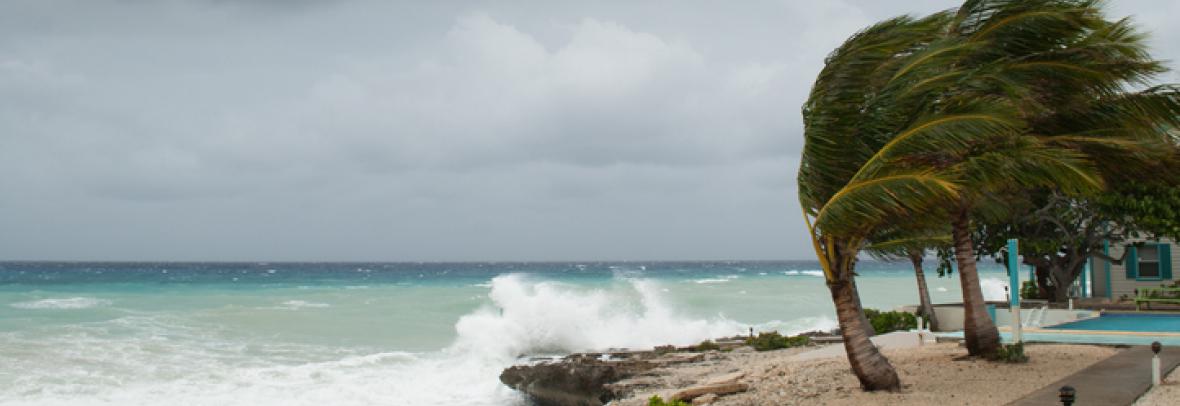
A 56-page report looks at potential Fla. economic damages caused by a changing climate, such as agriculture and even the tax base of local governments.
TALLAHASSEE, Fla. – Florida TaxWatch (FTW) released A Rising Tide Sinks All Homes: The Effects of Climate Change on Florida’s Economy, a 56-page report developed to better understand climate change’s potential costs and consequences on each of the 11 industries that comprise Florida’s economy.
“Climate change, sea level rise and the need for resiliency make for regular headlines, but what’s often missing from the narrative is the impact on our economy,” says Florida TaxWatch President and CEO Dominic M. Calabro. “The impacts of a changing climate translate into real economic repercussions. If bankers and insurers won’t secure the 40% of residential properties and 35% of commercial properties at risk of chronic flooding in Florida and they then come off property tax rolls, our communities will be impacted even when there is no rising water or storm surge in sight. If extreme heat deters outdoor recreation and tourism that drive our sales-tax-dependent economy, or if related disruptions stress supply chains or operations at airports, seaports and spaceports, billions of dollars in payroll and investments needed to support schools, roads, bridges, water and sewer systems, public safety and more will certainly be compromised.”
Calabro says, “Doing nothing is no longer an option. Making hard choices will establish Florida as a leader in this space and allow us to prepare for both the environmental and economic challenges ahead.”
According to FTW, more than 70% of Florida residents (16.1 million out of 22 million) in 2020 lived in a coastal county. By the year 2045, approximately 64,000 residential properties (valued at $26 billion) that exist in the state today will be at risk of chronic flooding from sea level rise and more frequent and severe storms, which will likely remove almost $350 million from local governments’ property tax base.
But inland communities and those connected to the sea by rivers are still vulnerable to other impacts of climate change. As temperatures rise, health risks also increase, and changes in precipitation patterns and extreme weather will impact health systems, workdays, tourism, natural structures and food supplies.
According to FTW’s report, the entire state could see climate-change-induced supply chain disruptions. It estimates those will last a month or longer are occur, on average, every 3.7 years.
Impact on Florida’s 11 key industries without mitigation efforts
- Financial activities: By 2050, the value of private property below local high tide levels is expected to increase to $152 billion. Increased tidal flooding and more frequent and severe storms will threaten insurable property and lower asset values of mortgage-backed portfolios. The report suggest that lenders could be more reluctant to write long-term mortgages in high-risk coastal areas. The vulnerability and relative decline in home prices in high-risk census tracts could lead to 20% fewer home transactions in certain communities.
- Leisure and hospitality: Large-scale climate events, such as major hurricanes, and gradual processes, like sea-level rise and excessive heat, could disrupt tourism. By 2050, Florida’s tourism industry could bring in $40 billion less in annual revenue without mitigating efforts in place.
- Trade and transportation: A two-foot rise in sea level, expected by 2050, would endanger approximately 252 miles of Florida’s most high-traffic highways. When including the impact of sea level rise on smaller state and local roads, the number of flooded roads would grow by an additional 445 miles by 2040 and 1,600 miles by 2060.
- Health services: In addition to any structural risks to infrastructure, the report suggests the mortality rate due to heat-related illness will climb anywhere from 3.8 to 5.8 people per 100,000 Floridians every year, which roughly translates to between 1,000 and 1,400 additional deaths annually by 2035.
- Agriculture: Rising temperatures, flooding, and extreme storms threaten crops, decrease growth, and impact growing seasons and crop insurance. Higher temperatures will induce greater heat stress on livestock, negatively affecting milk and meat production, and possibly diminishing the quality of products for end consumers. The aggregate economic losses for Florida’s dairy and beef industries alone due to heat stress would be about $25.3 million annually in future years.
- Government: As local and state government expenditures are increased to raise and repair roads, retrofit and harden water infrastructure, construct seawalls and implement other resilience measures, it can be expected that sales tax, doc stamp collections, and property-value based assessments will be compromised. By 2045, the potential loss of property tax revenues due to devalued property valuation tied to chronic tidal flooding will climb to $350 million.
Florida TaxWatch’s climate change recommendations
- Establish a systematic and organized approach to reducing risk by raising buildings and critical infrastructure above the base flood elevations, constructing levees and seawalls, and establishing water storage reservoirs, among other structural measures.
- Invest in the protection and restoration of natural buffers, like coral reefs, barrier islands and mangroves, to help absorb wave energy and storm surge.
- Develop targeted strategies to reduce regional carbon dioxide emissions, including installing more solar panels and solar panel farms.
- Promote land use and construction practices that improve resiliency, such as elevating homes and incorporating building methods and materials designed to reduce wind damage.
- End or modify government programs and policies that encourage risky development.
© 2021 Florida Realtors®
Go to Source
Author: kerrys



